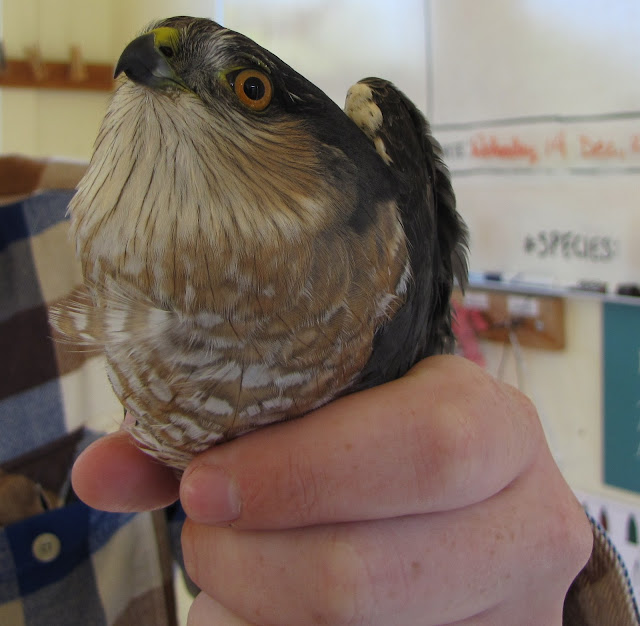I want to share with you all my two favorite birds caught in the last week!
First is the Black Phoebe. This is a species that we see at Palomarin every single day, but this is the first time I have seen one in the hand. So, when I heard over the radio that French was bringing a Black Phoebe to the banding station, I was pretty excited and here is what I got to see.
 |
| Black Phoebe, a good photo to compare against the Eastern Phoebe in previous posts [Photo by Cory Ritter] |
The other highlight was this second year, male Sharp-shinned Hawk. I saw a lot of these at Hawk Ridge this fall, but it is a nice treat for Palomarin. Also, a majority of sharpies caught are hatch year males, so it was nice to have a second year bird in the hand!
 |
| Luke attempting to make this SSHA look at the camera [Photo by Cory Ritter] |
 |
| Here is a good look at the orange/red iris of a male second year Sharp-shinned Hawk [Photo by Cory Ritter] |
 |
| Note the dark cap and nape, and the rufous (horizontal) barring on this second year SSHA, as well as the orange/red iris as seen before [Photo by Cory Ritter] |
 |
| Here you can see the blue back and upperwing coverts on this second year Sharp-shinned Hawk [Photo by Cory Ritter] |
 |
| Another look at the orange/red iris, rufous barring on the chest, and overall 'buggy-eyed,' or large eye-size to head-size ratio, appearance of the Sharp-shinned Hawk [Photo by Cory Ritter] |
That's all for now, but check back soon for more updates!
By Cory Ritter







Very cool Cory!
ReplyDeleteJust curious why this is SY and not simply AHY. Thanks.
ReplyDeleteSo, as it turns out, eye color is a good indicator of age in SSHA. Hatching year birds have yellow eyes, and adults, or after second year birds will generally have red eyes. Male SSHA eyes are darker red than females. Second year males, have not fully matured and their eyes tend to be orange rather than red. As you can see in the photos this bird has orange-red eyes, typical of a second year male. Hope this was helpful.
ReplyDelete